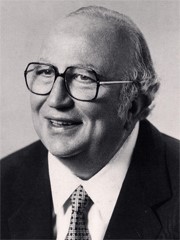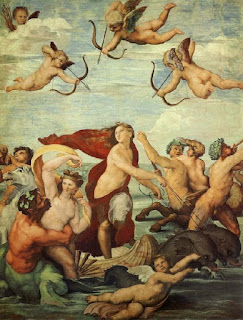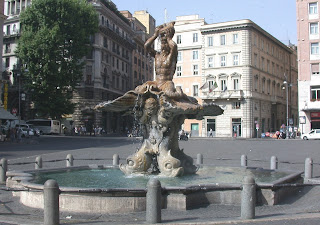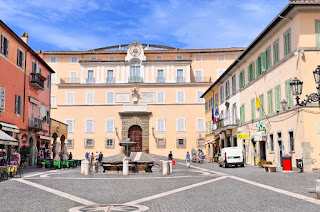The first non-Christian Democrat to lead Italian Republic
 |
| Giovanni Spadolini in 1987 |
Giovanni Spadolini, who was the Italian Republic’s first prime
minister not to be drawn from the Christian Democrats and was one of Italy's
most respected politicians, died on this day in 1994.
In a country where leading politicians and businessman
rarely survive a whole career without becoming embroiled in one corruption
scandal or another, he went to the grave with his reputation for honesty
intact.
Although he was an expert on Italian unification and became a
professor of contemporary history at the University of Florence when he was
only 25, a background that gave him a deep knowledge of Italian politics, he
first built a career as a journalist.
He became a political columnist for several magazines and newspapers,
including Il Borghese, Il Mondo and Il Messaggero, and was appointed editor of
the Bologna daily II Resto del Carlino in 1955, at the age of 30.
In 1968, having doubled Il Resto’s circulation, he left
Bologna to become the editor at Corriere della Sera, in Milan, where he
remained until 1972. It was while
editing the Corriere that he became known for his anti-extremist stance, condemning
violent student activists on the left and terrorists on the right in equal
measure.
Under his stewardship, the Corriere took a strong
anti-Communist stance, provoking attacks on its offices by angry demonstrators.
Once, a stone thrown by a demonstrator smashed through Spadolini’s office
window. He picked it up and placed it on his desk, where it remained throughout
his time as editor, as a reminder of the turmoil brought about by political
extremism.
 |
| Prime Minister Spadolini (right) with the Italian president, Sandro Pertini |
During his time in Milan, Spadolini was persuaded
to enter politics. In 1972, after leaving the Corriere, he was elected senator
as an independent with the Republican Party. He was appointed Minister of
Cultural Affairs in Aldo Moro’s cabinet in 1974.
He became leader of the Italian Republican Party in 1979, a
position he held until 1987, and in 1981 he was chosen to be Italy's first
non-Christian-Democrat prime minister by the Socialist President, Sandro
Pertini.
In partnership, these two men did much to restore the
credibility of Italy's political institutions after years of terrorist violence
and the scandal of the secret P2 Masonic lodge, a secret society that included politicians,
businessmen, some high-ranking military officers and policemen, that attempted
to create a ‘state within a state.’ Spadolini introduced laws suppressing secret
organisations.
It was during Spadolini’s time in office that the anti-terrorist
unit of the Italian police freed the United States general James Lee Dozier,
who had been kidnapped by the Red Brigades. He also achieved a drop in inflation from 22
per cent to 16 per cent during his 18 months in office.
Spadolini, born into a bourgeois Florentine family, was
known as a connoisseur of good food and drink and his wide girth became the target of Italy's political cartoonists.
Yet, in the 1983 national election, the Republican Party
capitalised on Spadolini's popularity, realising 5.1 per cent of the vote, the
highest they had achieved.
 |
| The Spadolini villa outside Florence is now the home of a cultural foundation |
He became dismayed at a new class of politician emerging at
that time, whom he felt were preoccupied with grabbing the spoils of power
rather than healing the ills of the country. As the speaker of the Senate from
1987, Spadolini regularly underlined his concern for Italy's institutions.
From 1987 to April 1994, he was president of the Italian
Senate and, for a month in 1992, acting president of Italy, following the resignation
of Francesco Cossiga.
After the electoral success of Silvio Berlusconi's House of
Freedoms party, he lost the presidency of the Senate to Carlo Scognamiglio
Pasini by a single vote. He died four months later in Rome.
In his villa at Pian dei Giulliari, in the countryside near
Florence, Spadolini left a library containing some 70,000 volumes on
contemporary history and the 19th century. The villa became home to a cultural
foundation dedicated to the study of Italian unity.
 |
| Casa Spadolini at 28 Via Cavour in Florence |
Travel tip:
Spadolini’s home until 1978 was at 28 Via Cavour, one of the
principal streets in the northern part of the historic centre of Florence, a
four-storey palazzo that had been acquired by his grandfather. Spadolini kept the house as his main
residence even while he was editing in Bologna and Milan and serving the
country in Rome. He left for the family villa in Pian dei Giullari after the
death of his mother.
Travel tip:
Pian dei Giullari is a picturesque village in the hills some
5km (3 miles) south of Florence. Many
villas line the Via Pian dei Giullari that runs through the village. The
Spadolini Foundation is at number 139. On the same street can be found Il Gioiello,
where the physicist, mathematician and astronomer Galileo Galilei spent his
last years.


























